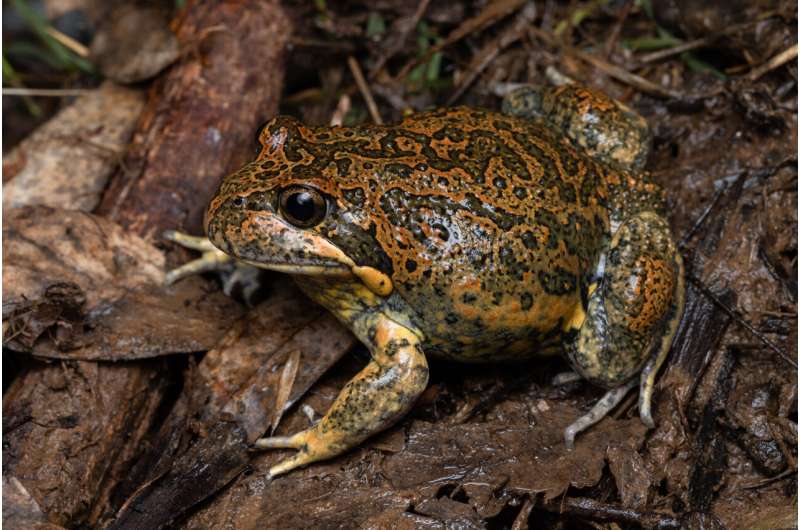This article has been reviewed according to Science X's editorial process and policies. Editors have highlighted the following attributes while ensuring the content's credibility:
fact-checked
peer-reviewed publication
trusted source
proofread
Researchers use frog sounds to better understand whether an ecosystem is healthy

A recent study led by Australia's national science agency, CSIRO, with Griffith University and the Forestry Corporation of NSW, recorded the sounds of frogs near the riverbanks of the Murray-Darling Basin. The study is published in the journal Ecology and Evolution.
The aim was to create and test call recognizers—a software that automatically listens to and counts frogs to clearly detect a range of different species.
The researchers recorded frog sounds across 20 sites nested in the Koondrook State Forest along the Murray River in NSW, and successfully detected eight species including:
- Common eastern froglet
- Spotted grass frog
- Long-thumbed frog
- Peron's tree frog
- Pobblebonk frog
- Eastern sign-bearing froglet
- Painted burrowing frog and
- Growling grass frog.
Dr. Simon Linke, bioacoustics expert at CSIRO, said frog sounds are a key indicator of a healthy ecosystem and the success of water delivery.
"Some of the frogs make high frequency chirps, some 'bark,'" Dr. Linke said.
"But our favorite frog—the aptly named Pobblebonk—makes a characteristic 'boing' that sounds like plucking a banjo."
While the first stage of the project focused on mastering the call registers and recognizing sounds, the next stage of the project compares frog sounds from sites with plenty of water to those with low water flow to understand the differences.
The Murray-Darling Basin is a national icon under stress in a changing climate. Ensuring this important waterway remains healthy and productive is vital for the communities, environment and industries relying on it and of course for the animals that inhabit it.
You can listen to the sounds captured in the Murray-Darling Basin here (MP3, 1 MB). The first 'cackle' sound is the Peron's tree frog. Then a 'click-click' of the spotted grass frog. Finally, a 'bonk' from the Pobblebonk/Banjo frog.
More information: Simon Linke et al, Evaluating and optimising performance of multi‐species call recognisers for ecoacoustic restoration monitoring, Ecology and Evolution (2023). DOI: 10.1002/ece3.10309
Journal information: Ecology and Evolution
Provided by CSIRO


















